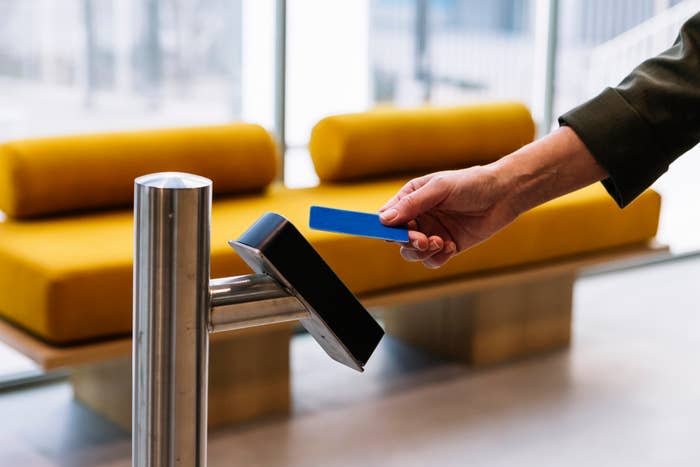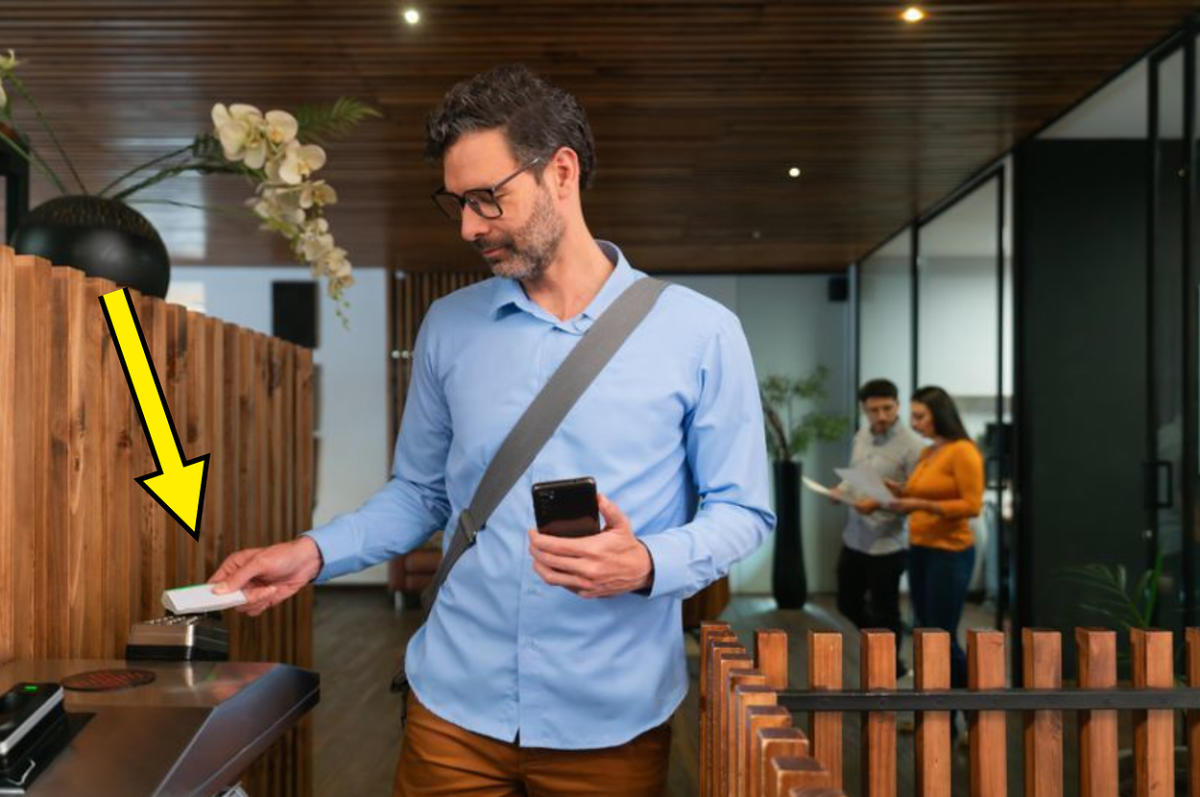Do you swipe to your office building to fulfill your personal mandate, but leave as quickly as possible? There’s a word for your secret strategy: “coffee badging.”
It is the situation where you stay in the office long enough for a cup of coffee or a meeting, specifically to perform the tasks you have in the office, while continuing to work primarily from home when possible.
This new workplace language was popularized by videoconferencing company Owl Labs. The company defined it as “showing your face in the office and then leaving.” In its 2023 report of 2,000 full-time U.S. workers, 58% of hybrid workers said they were doing “coffee badging,” while another 8% said they wanted to try it out.
And as hybrid arrangements have become a more permanent feature of office life, coffee badging is still here to stay. In a recent LinkedIn News survey of 1,568 people from June, 19% of LinkedIn users said they still “coffee badged” to work.
Amanda, an IT project manager for a Chicago-based health insurer, is one of them. Her company has a hybrid policy, and Amanda ― who asked that her last name be withheld for work purposes ― said managers are open with employees that badge swipes are tracked for “badge reports,” which calculate the percentage of people in the office each week or month.


She's never had a conversation about her own attendance record keeping, but knowing that her badge usage could potentially lead to a performance issue has her diligently traveling to the office because she “doesn't want to have that conversation at all.”
As a result, Amanda stays for at least four hours to make her presence known, she said, but she goes home as soon as she can. The feeling that her presence is being tracked makes her “uneasy.”
If she could, she would work 100% remotely, as she finds the office days with commutes exhausting and a “waste of time” since her direct boss works in a different city and she video conferences with remote colleagues.
“I don't want to be here. I can do this from home,” Amanda said.
In this way, coffee badging at work and outside of work is a way to regain control and autonomy over how your work gets done. An employer can order some of my time, but not a second more than necessary, is the strategic coffee badging philosophy.
Why coffee badges can also be a response to employer surveillance


And it’s not in the minds of employees ― badge logs can have real negative consequences for someone’s career. In January, a professional services firm reportedly released an analysis of partners that linked office visits and turnstile data to semi-annual performance reviews.
For her book, “The Algorithm: How AI Decides Who Gets Hired, Monitored, Promoted, and Fired and Why We Need to Fight Back Now,” journalist Hilke Schellmann interviewed an HR chief who told a story about a company that made promotion and firing decisions based on badge log data.
“They wanted to promote the people who were working the longest hours in the office, so they looked at the keycard swipe-in data,” Schellmann said of the company. “And then when the pandemic came and they had to look at layoffs, they wanted to reuse that kind of data to understand who the ‘least productive’ people were, and they started looking at the badge data logs.”
But to be clear, the number of times you use your badge is an inaccurate signal of your job performance.
Using badges to determine productivity “could be detrimental to people on sick leave, or people with caring responsibilities, who we know are literally sitting at their desks less often than others,” Schellmann said.
So why are employers so inclined to find deeper meaning in badge logs, despite their obvious flaws? It could be because it’s part of a growing field of people analytics.
“Companies want to use the data they have on their employees,” said Schellmann, who noted that there is also a long-standing mentality of “managers just kind of [wanting] to look around the room and see buttocks on chairs.”
“It's all about impression management,” she added.
But a word of caution to the coffee thief: don't stay longer than a cup of coffee, as managers can easily track how long you've been in the office and may feel betrayed if you just drop in.
“Thanks to digital technology, everything leaves a trail, and that trail can be checked by superiors,” says Schellmann.
How to Make Coffee Badges Work for You


You can go to the office reluctantly or you can be pragmatic about the mandate in the office. The latter can be a useful adjustment in your attitude.
“Try to reframe the coffee roast in a way that makes you feel like you're getting the most out of this situation,” suggests Archana Bharathan, an executive coach at Columbia Business School.
Bharathan said she would go to her office less than three days a week if she had the choice, “but I would still go because I see the benefit of it.”
Her role requires her to build and deepen relationships with colleagues, so she sees the time she spends with colleagues as an incentive. However, she also recognizes that her productivity would decrease if she were to contribute alone and mainly have Zoom calls.
Bharathan’s advice to fellow coffee badgers is to find ways to make your time in the office productive. She suggested scheduling meetings on days when you’re present in person.
“If you have the flexibility to choose which three days you need to be there, think about… how you can balance your commute with other things that require attention in your personal life, [like] “If you have to go shopping,” she said.


And if you're a manager of a team that's into “coffee badges,” you might want to take a closer look at why this trend is happening.
Ask yourself: “Are people who spend more time in the office delivering better results? Are they showing up for meetings and collaboration spaces? Or are they simply spending time commuting to take Zoom calls from the office instead of from home?” suggested Bonnie Dilber, a recruiting manager at app automation company Zapier.
“Good managers focus their teams on the actions that will have the greatest impact, so I would encourage any employer who sees employees going through the motions to meet a minimum expectation in the office to consider whether the expectation will actually lead to impact,” she continued. “If the answer is yes, help people recognize that so they spend more time in the office, and if the answer is no, I would rethink the requirement.”
Here’s a word to the wise: Coffee badges are not an accurate signal of performance. Busyness does not equal performance. If you see a coworker physically typing at the desk next to you, that doesn’t mean he’s actually working.
Take it from Amanda. Instead of placing weight on an employee's badge swipe count, she wishes managers would instead “look at the work that's actually being done and feedback from other people who [have] worked with the individual as a real benchmark.”This article originally appeared on HuffPost.

